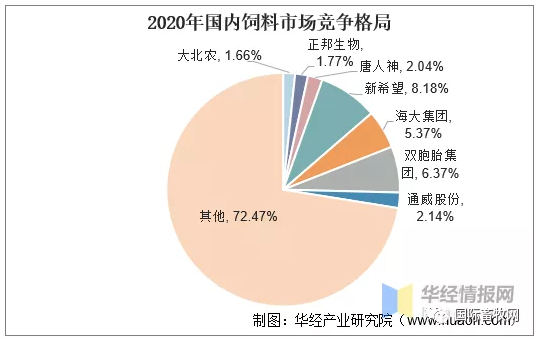养猪专家讲解:母猪的合适背膘厚度是多少?
发布: 2017-04-21 | 作者: 佚名 | 来源: 转载

这些裤子让我看起来胖吗?
Do these pants make me look fat?

Lorne and Vicki Tannas: 养猪生产专家,核心猪场支持
Lorne and Vicki Tannas: Swine Production Specialists and Nucleus Support
显然,根本没有一个正确答案。
母猪的合适背膘厚度是多少?这是我最常问的问题之一。15年前,我有机会在一个3年项目中研究这个问题。我一直不愿回答这个问题,因为一般来说,母猪在较大背膘范围浮动可以表现正常,正是这个项目得出的结论。不同水平的背膘厚度,母猪需要不同的管理水平。15年后,我们那时出生总数的母猪断奶。这使得今天母猪的背膘问题更加严重。你永远不可能正确地回答这个问题,但是你可以看到某些更易于管理的水平。
一般来说,当背膘厚度达到极限的时候母猪性能表现差。太瘦的母猪存在繁殖性能问题,这与肌肉代谢代替了脂肪代谢相关,因为在妊娠最后3周胎儿长得最快,以及哺乳阶段机体对蛋白质(乳汁)的需求非常大。过于肥胖的母猪,在泌乳阶段往往不吃食,然后乳汁从背部(脂肪储存)产出。结果会导致过度丢失体重,后期窝产仔数少,还有长的断奶间隔期。在断奶后间隔期间,增加或丢失过多体重的母猪,也将会在群体中寿命更短。太瘦的母猪可能正好不能饲养回来。
Obviously, there is never a right answer.
What is the proper backfat for a sow? This is one of my most frequent asked questions. Fifteen years ago, I had the opportunity to work on a 3-year project studying this question. I have always been reluctant to answer this question because in general, a sow can perform normally with a large range of backfat, as this project had found out. In differing levels of backfat, she will require differing levels of management. Fifteen years later, the sow is now weaning what we had at that time as total born. This has made the question of backfat in sows more acute today. You can never be right in answering this question but you can see certain levels that are more manageable.
Generally, sows perform poorly when backfat is taken to extremes. Sows that are too lean have fertility problems related to metabolizing muscle instead of fat during the last 3 weeks of gestation when fetus growth is the greatest and during lactation, where the demand for protein (milk) is very great. Overly fat sows tend not to eat during lactation and milk off their backs (fat reserves). This resulted in excess weight loss, poor subsequent litter size and long wean to service interval. Sows that gain and lose excess of weight during the sow interval will also have a shorter life span in the herd. Too skinny sows may just not breed back.
那么,正确的背膘厚度是多少呢?正确的背膘厚度是,用最少的管理,母猪表现正常,在哺乳阶段没有额外丢失体重,有好的断奶仔猪数量,容易饲养恢复至正常体重,以及在群体中停留更长的时间。
头2胎母猪的背膘管理比老母猪更重要,因为老母猪具有较大的采食量和较大的体重需要调节。因此,我将会关注后备以及将后备母猪的发育作为一项最佳实践。
后备母猪应该遵循严格的遗传程序。对背膘厚度的强调应该降到最低。100kg的繁殖后备母猪背膘厚度应该大约在12-14mm之间。进入配种阶段的后备母猪背膘厚度应该在14-16mm之间。分娩阶段的后备母猪背膘厚度应该在20-24mm之间。在此以外的范围是可以接受的,但是需要更高的管理水平。我会倾向于后备母猪更胖点而不是更瘦点。背膘厚度具有40%遗传力,因此应该更多地关注终端公猪而非母系猪。后备母猪的背膘厚度,日龄和体重三者相互关联。图表1,图表2和图表3展现了这三个重要的相互依赖得因素。
So, what is the right level of backfat? The right level of backfat is where the sow performs normally without excess loss of weight during lactation, weans a good litter, breeds back well and stays in the herd for a long time, with the minimum amount of management.
Backfat is more important in the first 2 parities than it is in older sows that have a greater feed intake and larger body mass to draw from. Therefore, I will focus on the gilt and its development as a best practice.
Maternal gilts should follow a strict genetic program. The emphasis on Backfat in maternal gilts should be minimal. Maternal gilts at 100 Kgs should be around 12mm to 14mm. Maternal gilts at breeding should be 14mm to 16mm. Maternal gilts at farrowing should be 20mm to 24 mm. Anything outside this is acceptable but will require greater management. I would tend to be fatter with maternal gilts than leaner. Backfat has a 40% hereditability and therefore should be focused on the Terminal sire rather than on the Maternal side. Backfat in maternal gilts is interdependent of backfat, age and weight. Charts 1, 2 and 3 look at these three important interdependent factors.
下图给出了后备母猪的背膘厚度(以毫米计算)在分娩阶段应该发生浮动。(在配种阶段图表中厚度增加4mm。配种阶段理想的背膘是16-20mm)
Here is a chart that gives an idea of where the backfat (in Millimeters) in maternal gilts should range at farrowing. (At breeding shift the chart 4mm to the left. Ideal at breeding from 16mm to 20mm).
图表1

第二部分是总体重。繁殖母猪的体重也是一个很重要的组成部分。配种阶段的体重公斤
The second part of this is total body mass. Maternal gilts weight is also an important part of this. Weight in Kilograms at breeding.
图表2
![]()
第三部分是日龄。配种阶段的日龄
The third component is age. Age in days from birth at breeding.
图表3
![]()
下面是我在中国跟踪的5个纯种猪场。我们要关注猪场G。他们猪场过去10周的窝平断奶达到13头(2016年全年是12.5头),(包括大约克、长白、杜洛克3个品种)。这个猪场同其他猪场形成鲜明对比,他们在后备母猪培育和后备母猪乳房发育方面做出了很大的努力。他们在培育后备母猪的过程中关注了所有的三个部分。后备母猪能够哺乳14头仔猪。因为她具有适中的背膘厚度,日龄以及体重,因此有能力全程哺乳14头仔猪。管理这样的后备母猪最简单。断奶前死亡率低于5%。猪场H和猪场G则有不同的策略。猪场H利用更多的母猪更换老母猪,较少地关注后备母猪培育。牢记你的胎次分布。最大的群体一直是头胎母猪。猪场G关注后备母猪乳房发育。这样做会显著影响随后的母猪胎次和群体中的使用年限。
Here is a look at 5 purebred farms I follow in China. We want to focus on Farm G. Where they are weaning 13 pigs per sow over the last 10 weeks, (12.5 for all 2016), (with all three breeds Yorkshire, Landrace and Duroc). It in contrast to the other farms places a great deal of effort in Gilt develop and gilt udder development. They focus on getting all three components in developing the gilt. The gilt is given 14 pigs to milk. Because she has adequate backfat, age and weight she is able to milk for the full term 14 pigs. Management of this gilt is the simplest. The pre-wean mortality is less than 5%. Farm H and Farm G have differing strategies. Where Farm H puts more pigs on older sows and places less emphasis on gilt development. Remember your parity distribution. The largest group is always your parity 1 sows. Farm G emphasis gilt udder development. This has a great affect in subsequent parities and longevity in the herd.
图表4

总结
Summary
背膘厚度是非常主观的指标。它在可接受范围内浮动。某部分背膘厚度区间比其他区间更容易控制。后备母猪的背膘厚度跟日龄和体重相关联。后备母猪更加需要进行背膘管理。管理后备母猪的背膘,日龄和体重将有助于使母猪的泌乳量最大化,同时延长在群体中的使用寿命。3胎之后差异更加显著。参考有最好成绩的猪场,然后让最佳实践适应您的猪场。
Backfat is very subjective. There is a range of acceptable levels. Some levels are more manageable than others. Backfat in maternal gilts is interdependent of age and weight. Maternal gilts require a greater need for backfat management. Managing Backfat, age and weight of the maternal gilt will help to maximize her ability to milk, and have longevity in the herd. After parity 3 the range is much broader. Look at farms with best results and adapt the best practices to your farm.




